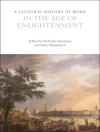The Civilization of the Renaissance in Italy (1860) is a work of art history by Swiss historian Jacob Burckhardt. Recognized today as the founder of modern art history and as one of the key thinkers of the nineteenth century, Burckhardt changed not only the way we think about the Renaissance in relation to European and world history, but the value placed on art as a tool for understanding historical developments.
The Civilization of the Renaissance in Italy begins with a section on the historical events which sparked the Renaissance, focusing especially on the frequent military conflicts which marred the era as well as on the constant political upheavals undergone by such Italian regions and cities as Rome, Venice, and Florence. Burckhardt then moves to a philosophical discussion of the development of individuality in Italian culture, arguing that the political circumstances of those living in the Republics enabled such thinkers as Dante and Petrarch to create art that corresponded with that newfound sense of individuality. The third section discusses one of the key elements of Renaissance culture: the revival of interest in the cultural products of the ancient world, especially Greece and Rome. Part four focuses on the prominence of discovery in Renaissance culture, for which Burckhardt looks to the colonial expedition of Columbus, the growth of the natural sciences, and the achievements of such poets and writers as Dante, Petrarch, and Boccaccio in discovering new ways to describe humanity and the human spirit. In the fifth section, the importance of societal customs and festivals is discussed, and in the sixth and final part, Burckhardt observes the profound shifts undergone by religion and morality in Italy at the time.
The Civilization of the Renaissance in Italy is a thorough, dynamic work of art history that not only changed the study of history at universities around the world, but elevated the status of art in understanding the process of cultural change.
This edition of Jacob Burckhardt’s The Civilization of the Renaissance in Italy is a classic of European art history reimagined for modern readers.
Since our inception in 2020, Mint Editions has kept sustainability and innovation at the forefront of our mission. Each and every Mint Edition title gets a fresh, professionally typeset manuscript and a dazzling new cover, all while maintaining the integrity of the original book.
With thousands of titles in our collection, we aim to spotlight diverse public domain works to help them find modern audiences. Mint Editions celebrates a breadth of literary works, curated from both canonical and overlooked classics from writers around the globe.
关于作者
Jacob Burckhardt (1818-1897) was a Swiss cultural historian. Born in Basel, Burckhardt was the son of a Protestant minister. As a young man, he studied theology, but eventually decided to study history at the University of Berlin. After a few years in Germany, he studied art history at the University of Bonn before returning to teach at the University of Basel, where he remained for the majority of his career. Burckhardt is considered a pioneer for his thesis of history not as a description of the past based on political circumstances and related events, but as a dynamic and holistic story of cultural and creative change. His groundbreaking work, The Civilization of the Renaissance in Italy, is noted for its reconstruction of the ways in which art, philosophy, and politics combined to create a new sense of the human spirit and a new conception of humanity’s role in the universe. More than anyone else, Burckhardt elevated the position of art and culture in the study of history, and for his achievements he is recognized today on the Swiss thousand-franc banknote.












